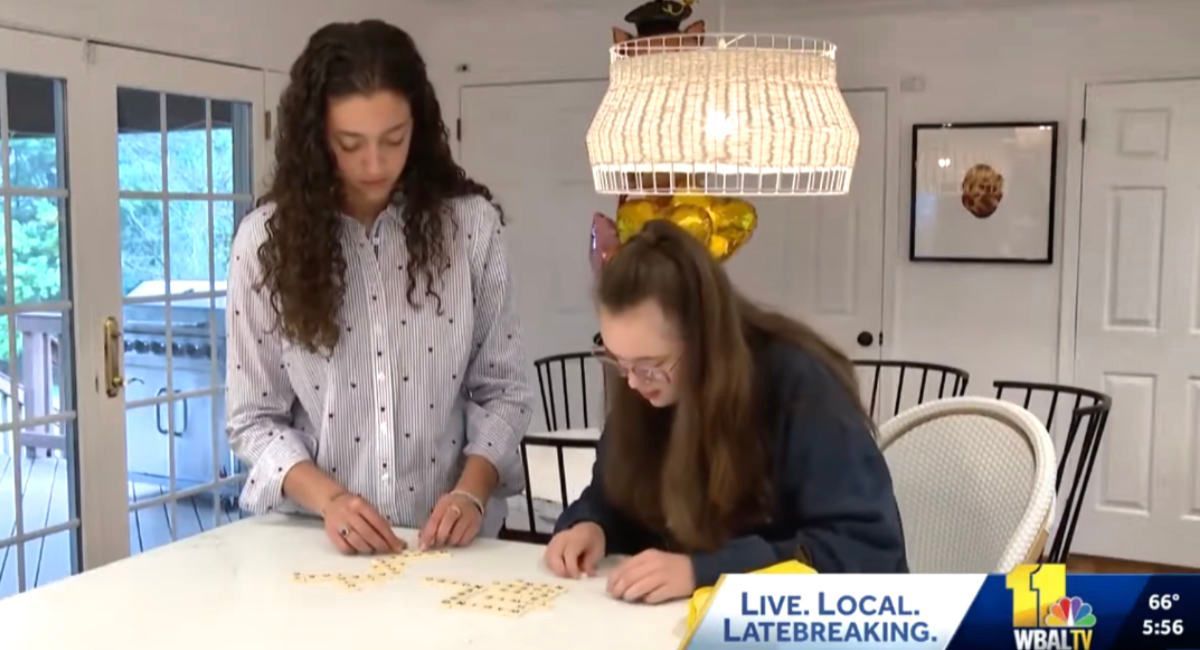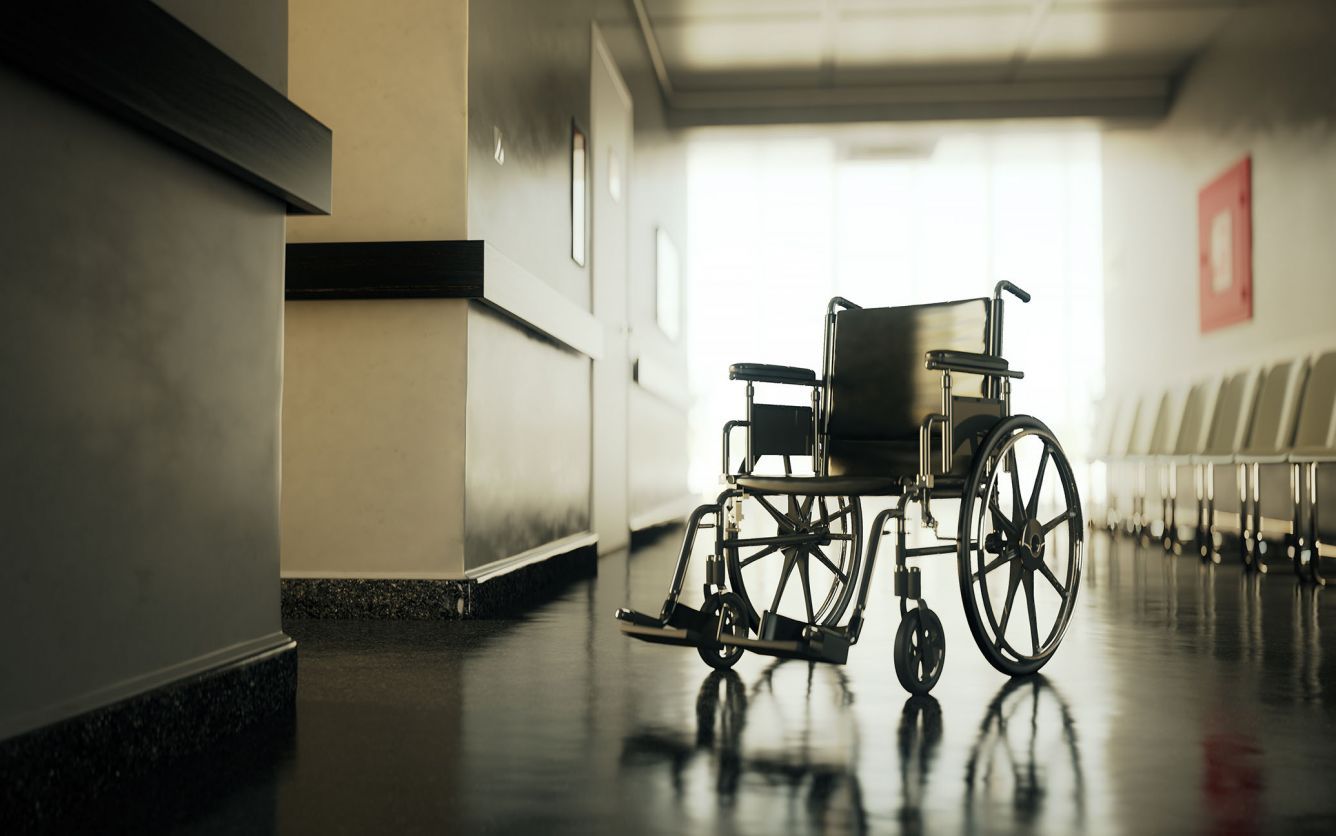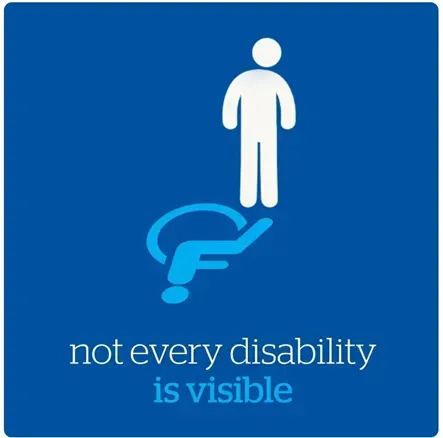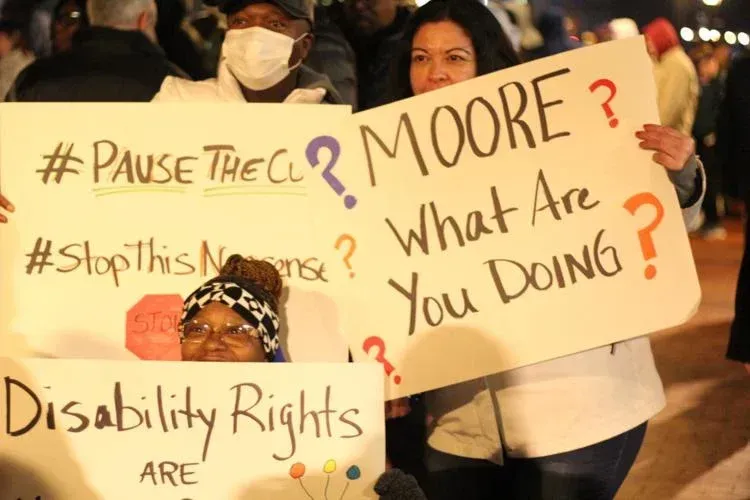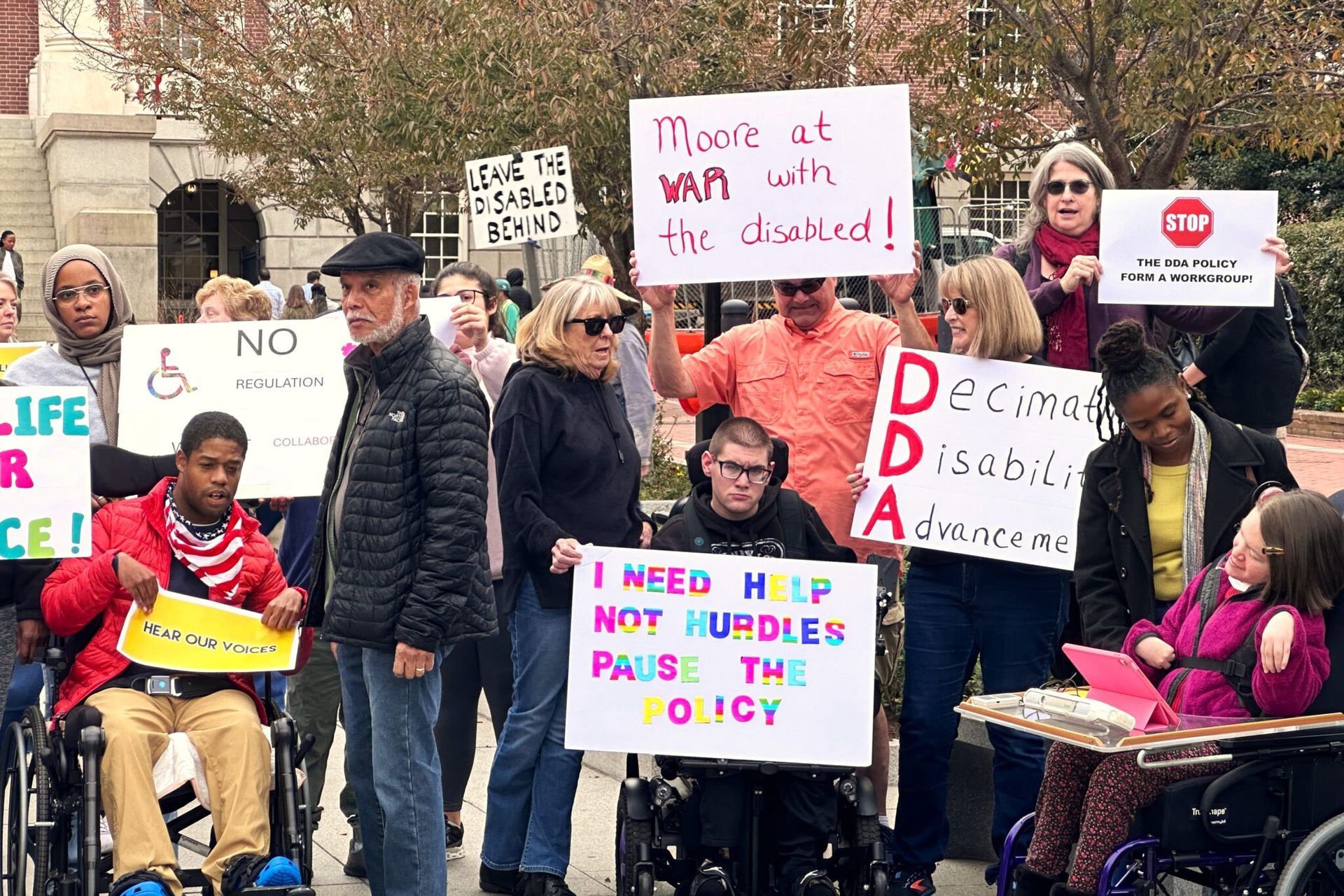Training For Capitol Hill Staffers Key To Shifting Attitudes On Accessibility
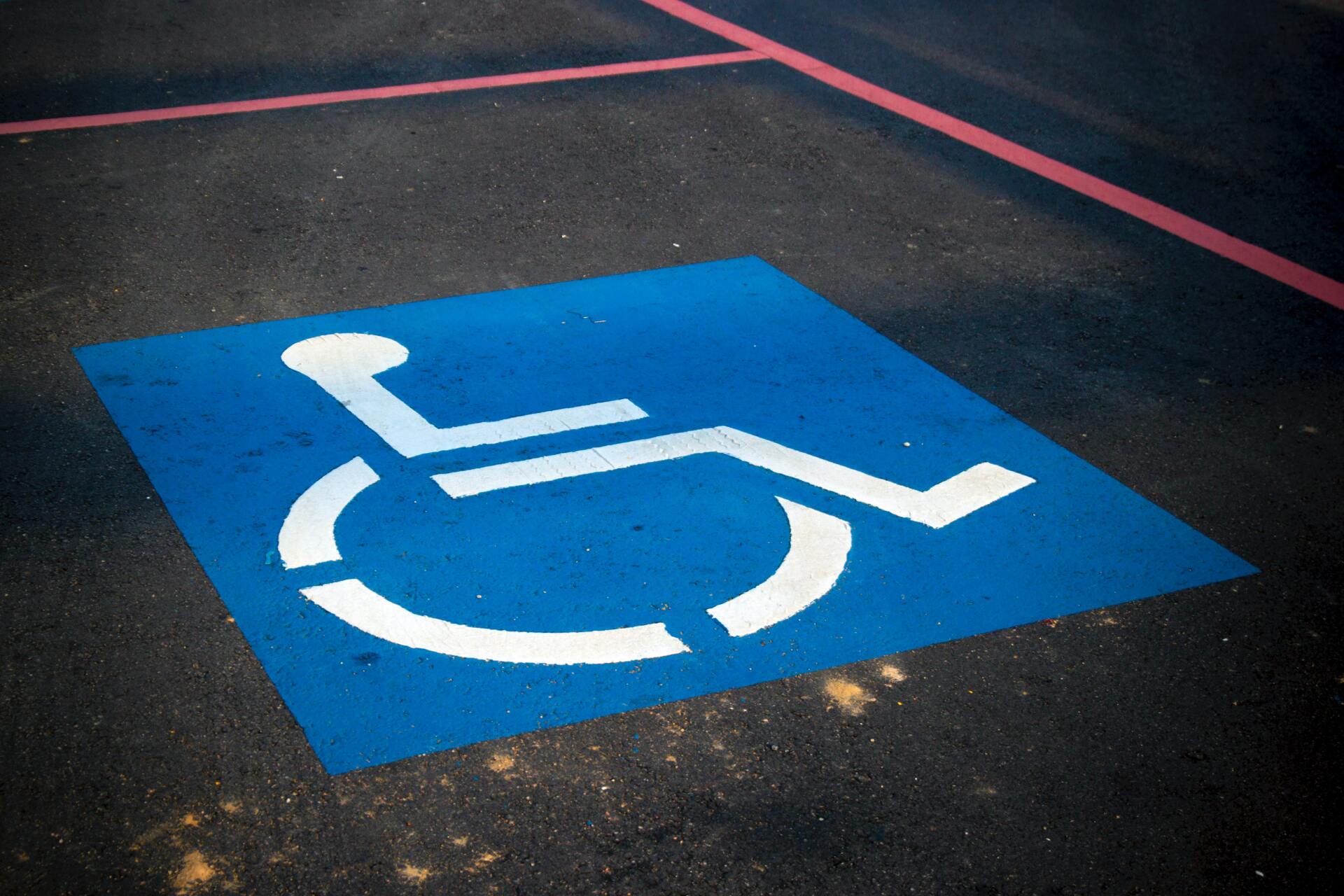
WASHINGTON — Many staffers are heading back to Capitol Hill, and official visitors aren’t far behind, but the return to offices is prompting questions about gaps in physical and digital accessibility in Congress for staff, lobbyists, constituents and lawmakers with disabilities.
With historic buildings and slow adoption of technology, Congress still has a long way to go to make itself accessible not just in the physical space but also online, where so much business has been conducted in the past year.
The U.S. House of Representatives’ Select Committee on the Modernization of Congress dug into this issue at a recent hearing, following up on three recommendations the panel made in the 116th Congress to improve website access, closed captioning and to study physical barriers across the Capitol campus.
Rep. Jim Langevin, D-R.I., who co-chairs the Bipartisan Disability Caucus and is the first quadriplegic to serve in the House, says that training and awareness among Hill staff could go a long way to improving both access and dignity for people with disabilities working and visiting the Capitol.
While there is a long list of physical changes to office buildings to be made, those involve a tangle of jurisdictional issues, funding and work orders.
But educating personal office, district and committee aides about accessibility and disability rights and resources could be an effective way to improve access and limit uncomfortable, disrespectful and exclusionary treatment for people with disabilities on Capitol Hill.
Phoebe Ball, who serves as disability policy counsel for the House Education and Labor Committee, described “attitudinal barriers,” including watching staffers gawk as she, a wheelchair user, approached them.
“I have sometimes been greeted by congressional staff with panic, obvious discomfort and occasionally condescension,” Ball told the committee at a hearing on May 27. “Whether these barriers are intentional or unintentional they are unacceptable and some basic disability awareness training can help, as long as the training doesn’t include disability simulations, which can reinforce stereotypes.”
Langevin emphasized that staff without knowledge of disability and accessibility resources can’t fully engage constituents, whether they are looking to take a tour of the Capitol or voicing concerns about a policy issue.
“Many House staff are simply not familiar with disability rights or accessibility services and procedures. By requiring the staff to have accessibility training, we can help the press staff put out communications in an accessible manner, enable administrative staff to handle internal and external accommodation requests properly and ensure staff with disabilities know where to request an accommodation, without fear of it impacting the job,” Langevin testified in that same hearing.
Security screening is one issue that Heather Ansley, associate executive director of government relations at Paralyzed Veterans of America, raised to the Modernization panel.
“Training should also be provided to congressional staff about how to interact with people who do not use speech to communicate, or who appear to behave in a nontypical manner,” she told the committee.
While the rapid move to remote work, virtual meetings and digital broadcasts of congressional action during the coronavirus pandemic accelerated some much-needed technological advances on Capitol Hill, there are still significant gaps in the accessibility of these online tools.
While there are regular audits of physical barriers and ADA compliance, there is much less accountability for ensuring that websites, online forms and social media posts are compatible with assistive technology such as screen readers, which enable people who are blind or have low vision to interact with websites, apps and other digital platforms.
While the ADA was enacted before smartphones were ubiquitous, rulings by the Justice Department and updates to the original law require web-based services be included in the reasonable accommodations under the ADA.
Judy Brewer, director of the Web Accessibility Initiative at the World Wide Web Consortium, said that while the changes made during the pandemic in some ways made Congress more accessible, it also revealed a chasm between the minimum standards and what is truly equitable.
“Given that the pandemic has accelerated society’s move from physical to virtual, COVID has at the same time, put the digital disability divided into sharp relief,” Brewer told the panel.
Langevin and Modernization Chairman Derek Kilmer, D-Wash., both acknowledged that a digital broadcast, which may open proceedings to a wider audience, is not accessible to the deaf community without closed captioning or an interpreter.
The Modernization Committee’s May 27 hearing, which was conducted virtually, did include closed captioning.
Brewer commended the panel for its recommendation to assess all House websites for accessibility standards, but also stressed that congressional documents should be posted in accessible formats.
“We are now seeing progress through innovation, driven by necessity. People with disabilities do not want to lose this virtual access that has opened new doors during this difficult time,” said Brewer.
The Capitol complex is replete with bulky doors and narrow hallways.
Dozens of rooms, including many public restrooms, have doors too heavy to be ADA-compliant or have narrow double-leaf doors and no push-button entry.
According to John Uelmen, general counsel at the Office of Congressional Workplace Rights, his agency’s most recent audit of accessibility found 1,632 barriers to access in House buildings, 447 of them in member offices.
While the observation of a barrier does not necessarily mean that the ADA was violated, Congress does give itself significant leeway in complying with the 31-year-old law. The OCWR doesn’t have strong enforcement power and the tangled web of jurisdictions among the legislative branch disperses accountability.
Uelmen told the committee that the issues in member offices could be easily solved by moving furniture, putting materials within reach or keeping both sides of a double leaf door open.
Ansely cited situations where veterans using power wheelchairs cannot fit into an office or conference room, so they end up meeting in a hallway.
“Now all of us have had hallway meetings if you’ve been on Capitol Hill. But when that’s your standard, because literally you cannot get into the office to navigate it, that’s troublesome, particularly for a woman who has served her country and has a disability as a result,” said Ansely.
Another 532 barriers were found in multiuser restrooms across the House, where sinks and dispensers need to be adjusted to the correct height and door pulls need to be added. But some need to be completely reconfigured to be accessible.
The audit, completed last year, is not available on the OCWR website, where the most recent biennial inspection report on Americans with Disabilities Act compliance is from the 114th Congress.
Uelmen proposed the creation of an ADA coordinator position in the House to facilitate the chamber’s efforts on ADA compliance.
Those efforts are currently being run by close to a half dozen different offices and agencies and are not well coordinated.
He suggested that the position would work alongside and complement the newly created Office of Employee Advocacy and Office of Diversity and Inclusion.
The Senate doesn’t have a committee dedicated to digging into the chamber’s operations like the House Modernization panel.
That leaves much of the oversight to the Rules or Appropriations committees, each with many other agenda items.
But one key Senate danger spot identified in a previous audit of the Capitol has been upgraded in recent years. The Senate subway, which lacked detectable warnings at the platform boarding edges, now has textured warning strips for those with vision impairments and audible announcements about trolley doors closing.
There is no data available on how many people working on Capitol Hill identify as having a disability, despite a push to study the representation of demographic groups among staff in Congress and how they compare with demographics nationwide or in a state or district.
© 2021 CQ Roll Call
Distributed by Tribune Content Agency, LLC

